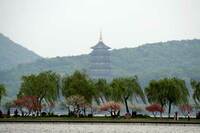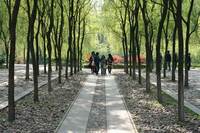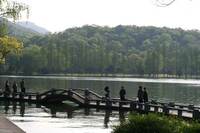- England
- Scotland
- France
- Holland
- Germany
- Italy
- Spain
- Portugal
- USA
- China
- Japan
- India
- Iran
- Advice
- Gardens
- England
- Scotland
- France
- Holland
- Germany
- Italy
- Spain
- Portugal
- USA
- China
- Japan
- India
- Iran
- Advice
- Garden Tours
Book: Landscape Planning and Environmental Impact Design: from EIA to EID
Chapter: Chapter 4 Public open space POS
Greenways can supervene on other land uses, like happiness on the face of youth. Many greenway objectives can be achieved by modifying other land uses. Open space management requires EID. Forest recreation can be provided as a byproduct of wood production, water recreation of water supply, river recreation of flood control, and parkland of mineral workings. These points are argued in subsequent chapters. The public goods which arise from public open space can also be achieved in association with other institutions. A financial centre could have a Finance Park with time clocks, share shops and screens showing the world's stock markets. An opera house could have an adjacent music park. Libraries could have book parks with stalls for booksellers and shelves of books which could be borrowed to read in a cloister-like space. Business parks should have places for sunbathing and waterbathing, to refresh the body for the next half of the day's toil. Public open space can be owned either by organisations which exist to supply public goods (eg a parks service) or by organisations which have another primary role (eg a water company) and supply public goods as a byproduct of their main activity. In both cases there is a need for multiple-use management and user-involvement in EID. Without user involvement, open space managers will lack good information and their actions, however well-funded and however well-intentioned, will produce an insensitive uniformity. Without participatory democracy, decisions will be based on old information and stale information. The paramount need is for diversity: of ownership, of management, of design and, above all, of use. Many of the historical open space types have a value which is diminished by uniform management. Their strengths and weaknesses have been reviewed in this chapter. The best of them can serve as archetypal 'patterns' or 'models' for the future. We cannot reï¾create the institutions which laid out open space in former times, or adopt their approaches to art, but we can devise new institutional arrangements, and we should make open spaces which contain the lost virtues and avoid the known vices.


